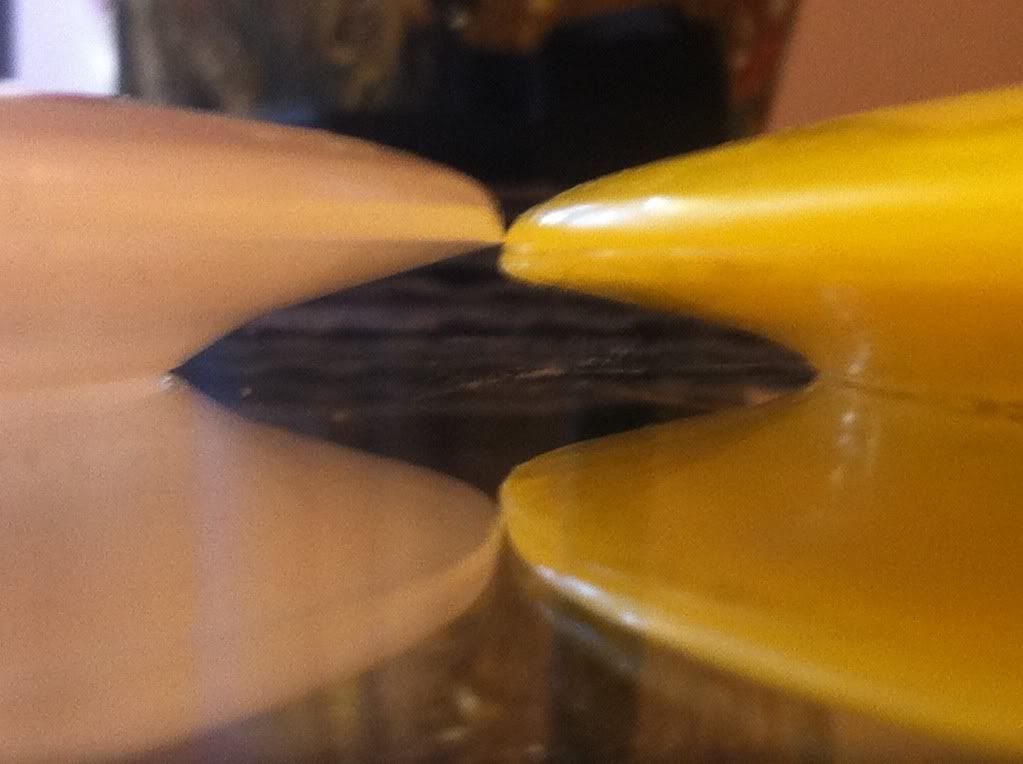In my experience, "flippy" is used to describe a disc that has become almost uncontrollably understable through wear, mold design, or both.
Describing a single disc as "stable" is more or less as you say, in that it describes a disc that flies straight, but the terms stable-overstable-understable only describe a disc's flight during its high speed portion of flight.
As olemiss5931 said too, people will use the word "stable" as a comparison that actually describes more overstable flight characteristics.
Some terms you might not know:
PLH: "Parting Line Height." Describes the height of the point at which the disc extends at its furthest point on the wing when looking at it edge-on. A picture:
The disc on the left is a DGA Tsunami, and the disc on the right is a Discraft Predator. See how the Tsunami's spot where it's the furthest right is above the Predator's corresponding point? The Tsunami is said to have a higher PLH than the Predator.
It is generally accepted that higher PLH translates to more overstability. Sometimes PLH can vary even within the same mold, so you can have two of the same disc, but they fly very differently.
Certain molds are known to be subject to these variations, like Latitude 64 Strikers.
(If anyone has a high PLH striker, PM me, please!)
